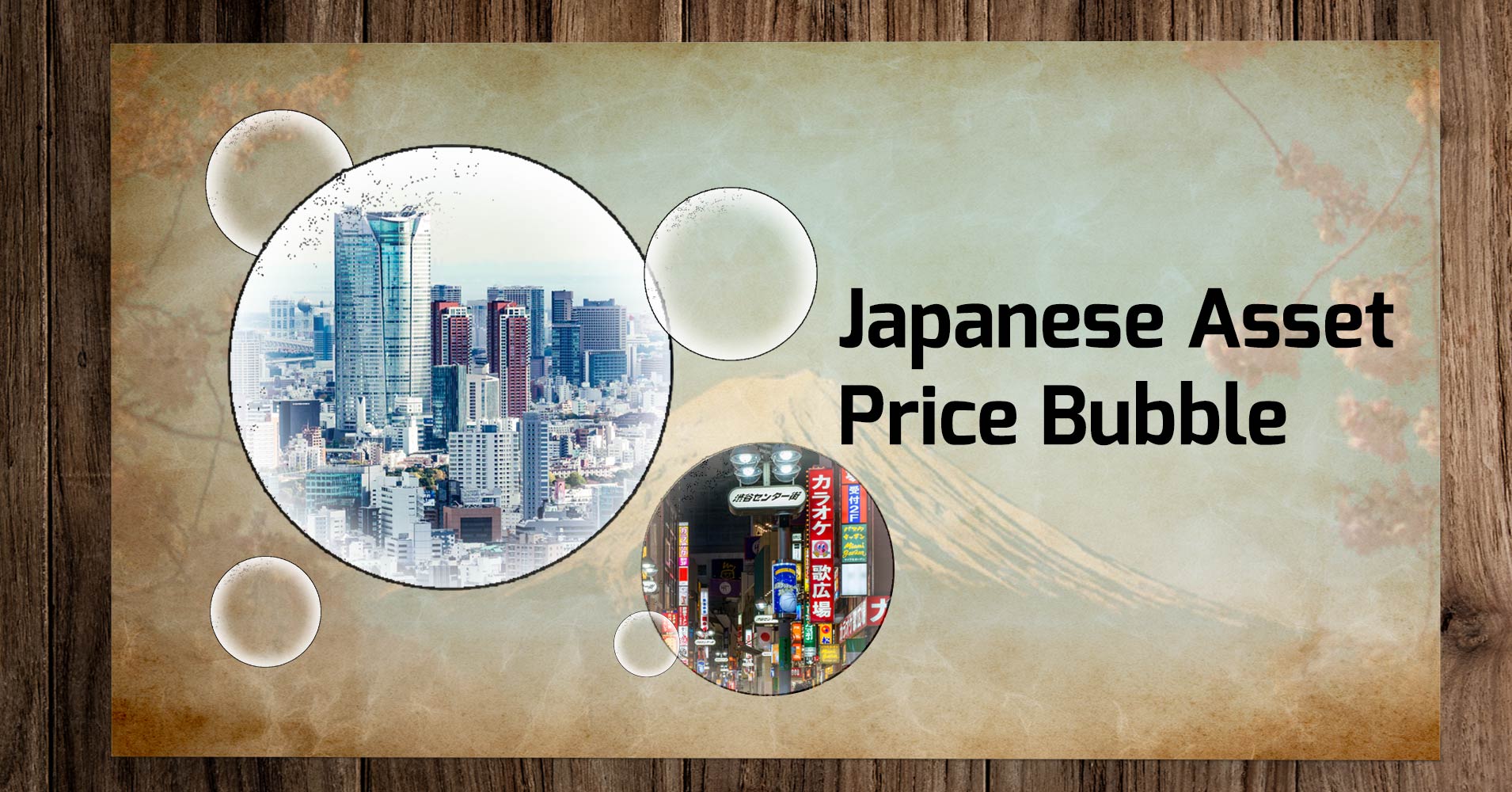
Investment Lessons from Historical Market Bubbles III
Written by Tianan & Ria on 2019-07-26
History repeats itself. Let's check out below key takeaways from serveral major market bubbles.

Spanish Property Bubble
Level of Craziness: 3.5 stars
Duration: 10 years
1997-2007 was the booming decade for Spanish real estate market. In the early 1990s, Spain recovered from the global economic recession, and the price of Spanish real estate and the number of new homes soared.
In addition, the Spanish economic structure has gradually begun its de-industrialization process, and since its economic development became more dependent on the service industry, the manufacturing industry growth slowed down. This makes real estate one of the main pillars of the Spanish economy.
From 2000 to 2009, real estate developers in Spain built nearly 1 million new houses annually, more than the combined number in Germany, France and Britain. At the peak of 2007, the real estate industry accounted for 16% of domestic GDP and 12% of total employment in Spain.
The soaring housing prices stimulated the rapid development of real estate industry, which led to a far greater supply of real estate. By 2008, 28% of the newly built houses in the previous seven years were vacant, and “ghost towns” started to appear.
As the 2008 financial crisis hit Spain, long-term loans (usually more than 40 years) led to a large number of corporate bankruptcies. The construction market plummeted, the unemployment rate soared, and the real estate bubble eventually collapsed. The real estate market accelerated its shrinking in size and price, which fell by 37% from 2007 to 2013.

Taiwan Stock Market Bubble
Level of Craziness: 2.5 stars
Duration: 5 Years
In the 1980s, the speed of macroeconomic growth in Taiwan began to slow down, but the trade surplus remained abundant. In 1985, the Taiwan stock market was at an early stage of development, with a total turnover of less than NT$200 billion and only 127 listed companies.
In the mid-1980s, the United States was dissatisfied with Taiwan’s trade surplus, and demanded the appreciation of Taiwan’s domestic currency to improve the US balance of payments.
However, with the devaluation of Taiwan’s domestic currency, the domestic market had a stronger expectation of appreciation of the Taiwan dollar in the future. Therefore, not only Taiwanese investors sold the US dollar, international hot money also flooded in. A large amount of capital set off a national gambling game, and underground investment companies flourished.
From 1985 to 1990, the Taiwan weighted index rose from 636 points to 12,495 points, a total increase of 19.65 times. The average daily turnover during the peak period was 5.6 billion, with price-earnings ratio close to 70 times.
The madness of the stock market was reflected in the empty halls of the government agencies during trading hours, primary schools tested students the stocks purchased by their parents, and taxi drivers refused to carry passengers in afraid of missing the market opening.
With the end of the appreciation of the New Taiwan dollar, the inflow of hot money slowed down, and the government began to tighten monetary policy. Coupled with the Japanese stock market crash and the Gulf War, the bubble began to burst. In 1990, the Taiwan stock market index plunged nearly 10,000 points to 2560 points within 8 months, a drop of nearly 80%.

Japanese Asset Price Bubble
Level of Craziness: 4 stars
Duration: 5 years
As today’s Chinese domestic investors believe that the most stable investment is always real property, the Japanese investors held the same belief in the late 1980s.
The 1980s was indeed the high time of Japanese economy, with Japanese products sold globally, Japanese enterprises acquired companies and bought landmarks around the world. Indeed, Japanese companies owned US banks, supermarkets, Hollywood film studios, and the NYC landmark Rockefeller Center.
At that time, the Fed appreciated the dollar in order to control inflation. Since high USD exchange rate was not convenient to intervene in the foreign exchange market, the G-5 nations—France, Germany, the US, the UK and Japan signed " Plaza Accord", which caused the dollar to depreciate, resulting in a sharp appreciation of yen against the US dollar.
Fearing that the yen appreciation will affect Japanese products export, the Japanese government implemented a series of policies to boost domestic demand and loosen financial regulations. The Bank of Japan also lowered interest rates to a very low level. Since real estate mortgages have lower risk weights than general corporate loans, real estate mortgages require only half of the capital when banks issued the same amount of loans. Thus Japanese commercial banks turned to the real estate sector.
By that time, Japan had completed its domestic urbanization, large amount of money flowed to the equity and the real estate market in major cities. In the same period, yen maintained a 5% annual appreciation rate: an investor could receive a return higher than 5% through exchange rate fluctuations by holding yen assets. Thus, international hot money poured in, which intensified the pressure on the appreciation of the yen, resulting in a rapid rise in stock prices and housing prices. The growth of equities and housing prices attracted more international capital to enter, and the land prices and stock price bubble started to form its shape.
The skyrocketed housing price limited the expansion of operation scales for the manufacturing sector, hindered urban construction, and made Japan’s seemingly prosperous economy a castle in the air.
In 1989, the Japanese government became aware of the economic bubble and raised interest rates three consecutive times a year, but it was too late. In 1990, the Japanese stock market and the property market bubble burst, and the economy collapse marked the beginning of the Lost Decade.
Disclaimer
Viewers should note that the views and opinions expressed in this material do not necessarily represent those of Magnum Research Group and its founders and employees. Magnum Research Group does not provide any representation or warranty, whether express or implied in the material, in relation to the accuracy, completeness or reliability of the information contained herein nor is it intended to be a complete statement or summary of the financial markets or developments referred to in this material. This material is presented solely for informational and educational purposes and has not been prepared with regard to the specific investment objectives, financial situation or particular needs of any specific recipient. Viewers should not construe the contents of this material as legal, tax, accounting, regulatory or other specialist of technical advice or services or investment advice or a personal recommendation. It should not be regarded by viewers as a substitute for the exercise of their own judgement. Viewers should always seek expert advice to aid decision on whether or not to use the product presented in the marketing material. This material does not constitute a solicitation, offer, or invitation to any person to invest in the intellectual property products of Magnum Research Group, nor does it constitute a solicitation, offer, or invitation to any person who resides in the jurisdiction where the local securities law prohibits such offer. Investment involves risk. The value of investments and its returns may go up and down and cannot be guaranteed. Investors may not be able to recover the original investment amount. Changes in exchange rates may also result in an increase or decrease in the value of investments. Any investment performance information presented is for demonstration purposes only and is no indication of future returns. Any opinions expressed in this material may differ or be contrary to opinions expressed by other business areas or groups of Magnum Research Limited and has not been updated. Neither Magnum Research Limited nor any of its founders, directors, officers, employees or agents accepts any liability for any loss or damage arising out of the use of all or any part of this material or reliance upon any information contained herein.
